
Discover the Untamed Beauty of Hwange National Park
Explore Hwange National Park, Zimbabwe's largest national park, and witness remarkable wildlife and breathtaking landscapes in a true African safari experience.
Hwange National Park, Zimbabwe's largest game reserve, is a wildlife enthusiast's paradise, showcasing diverse ecosystems and abundant wildlife, including elephants, lions, and more. Experience unforgettable safari adventures amidst stunning landscapes.
A brief summary to Hwange National Park
- ZW
Local tips
- Visit during the dry season (May to October) for the best wildlife sightings.
- Bring binoculars for excellent bird watching opportunities.
- Consider guided tours for deeper insights into the park's ecology.
- Stay hydrated and carry sufficient water during your safari.
- Respect wildlife and maintain a safe distance from all animals.
Getting There
-
Car
To travel from Mana Pools National Park to Hwange National Park by car, start at the main entrance of Mana Pools. Head southwest on the A1 highway, which is well-marked. Continue on the A1 for approximately 260 kilometers (about 5 hours), passing through the towns of Karoi and Chinhoyi. As you approach Hwange, follow the signs for Hwange National Park, which will direct you off the A1 onto the B1 road. The park entrance is located at the main gate and is clearly marked. Note that there may be a park entrance fee, typically around $15 per person, but check the current rates before your trip.
-
Public Transportation
To travel from Mana Pools National Park to Hwange National Park using public transportation, first, arrange for a lift or a taxi to get to the nearest major town with bus services, which is Karoi, about 60 km away. From Karoi, catch a bus to Hwange, which operates several times a day. The bus ride will take approximately 6-7 hours. Once you arrive in Hwange, you can take a local taxi or arrange for a shuttle service to get to the park entrance. Be sure to confirm the bus schedule in advance, as it can vary, and check for any additional fees for luggage or park entry.
Discover more about Hwange National Park
Iconic landmarks you can’t miss
Verney's Camp - Machaba Safaris
29.8 km
Discover the wild beauty of Hwange National Park at Verney's Camp, where luxury meets adventure in a stunning natural setting.

NEHIMBA LODGE
30.0 km
Experience the ultimate wildlife retreat at Nehimba Lodge, a luxurious haven nestled in Zimbabwe's Hwange National Park.

Camp Hwange
43.4 km
Experience the breathtaking wildlife and serene landscapes at Camp Hwange, your gateway to adventure in Hwange National Park, Zimbabwe.

Somalisa Expeditions
48.4 km
Discover luxury and adventure at Somalisa Expeditions, nestled in Zimbabwe's Hwange National Park, a premier safari destination.
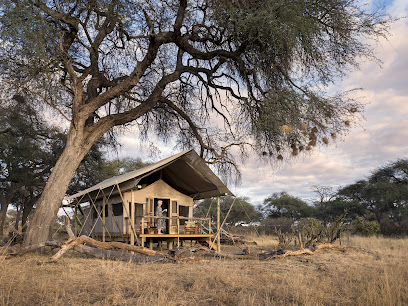
Somalisa Camp
48.9 km
Experience the allure of Hwange National Park at Somalisa Camp, a luxury lodge offering thrilling wildlife encounters in a stunning natural setting.

Ngweshla Camp
55.1 km
Experience the thrill of the wilderness at Ngweshla Camp, a children's camp designed for family adventures in the heart of Zimbabwe's natural beauty.
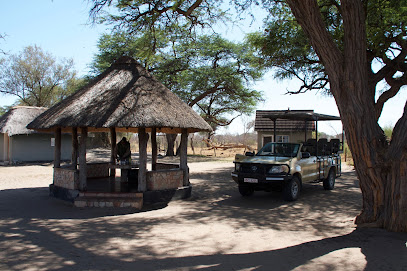
Hwange Main Camp
57.7 km
Experience the beauty and adventure of Hwange Main Camp, the gateway to Zimbabwe's wildlife wonderland and a haven for nature lovers.
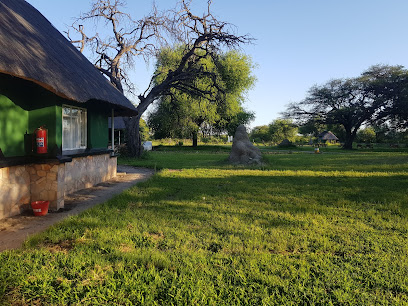
Somalisa Acacia Camp
60.5 km
Discover the ultimate safari retreat at Somalisa Acacia Camp, where luxury meets the breathtaking wilderness of Hwange National Park.

Gwango Heritage Resort
61.5 km
Immerse yourself in nature at Gwango Heritage Resort, a serene retreat in Hwange National Park, perfect for wildlife enthusiasts and relaxation seekers alike.

Gwango Elephant Lodge
61.8 km
Experience luxury and wildlife at Gwango Elephant Lodge, your gateway to the wonders of Hwange National Park, Zimbabwe's premier safari destination.

Hwange Horseback Safaris
62.5 km
Experience the thrill of Hwange Horseback Safaris, an unforgettable way to explore Zimbabwe's wildlife and stunning landscapes on horseback.
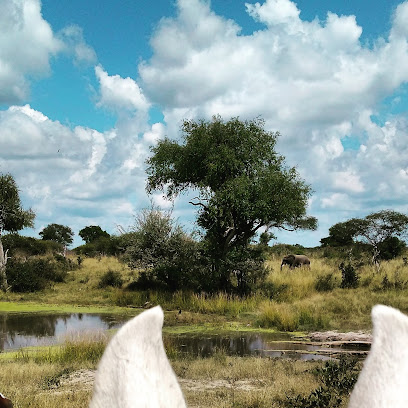
The Hide Lodge
65.8 km
Discover family adventures at The Hide Lodge in Hwange National Park, where nature meets education and unforgettable memories are made.

Hwange Safari Lodge
65.9 km
Experience luxury and adventure at Hwange Safari Lodge, where stunning wildlife meets serene accommodations in Zimbabwe's premier national park.

Deteema Springs - Machaba Safaris
66.7 km
Discover the enchanting Deteema Springs Lodge in Hwange National Park, where luxury meets the wild African landscape for an unforgettable adventure.
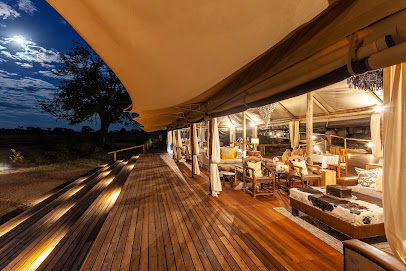
Hideaways Elephant's Eye Tented Camp
66.8 km
Explore the beauty of Zimbabwe at Hideaways Elephant's Eye Tented Camp, an eco-friendly lodge offering an authentic safari experience in the heart of nature.
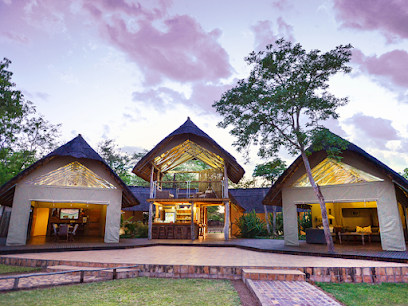
Unmissable attractions to see
Little Makololo
0.0 km
Explore Little Makololo in Hwange National Park, a stunning wildlife sanctuary offering exceptional safari experiences and breathtaking landscapes.

Inzila Mobile Safaris
2.5 km
Explore the wild beauty of Hwange National Park with Inzila Mobile Safaris, where unforgettable wildlife encounters await in the heart of Zimbabwe.
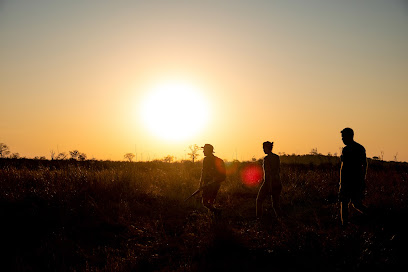
Jambili Picnic Site
38.2 km
Explore Jambili Picnic Site, a serene escape in Zimbabwe perfect for picnics, relaxation, and enjoying the great outdoors amidst stunning natural beauty.

Makona National Park
41.0 km
Explore the breathtaking landscapes and diverse wildlife of Makona National Park in Zimbabwe, a true paradise for nature lovers and adventure seekers.
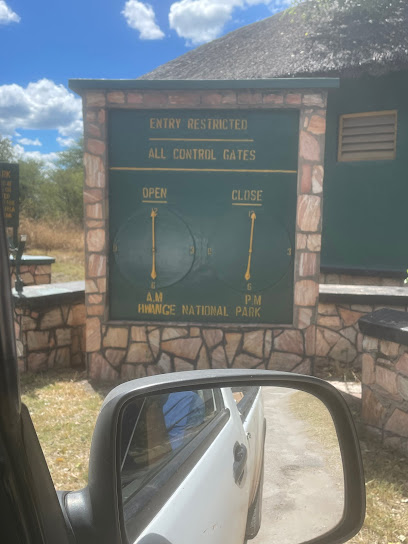
Hwange Safaris
49.5 km
Discover the untamed beauty of Hwange National Park, where wildlife roams free and nature's wonders await your exploration.

Ngweshla Pan
55.7 km
Experience the tranquility of Ngweshla Pan, a serene lake surrounded by wildlife, perfect for nature enthusiasts and photographers in Zimbabwe.
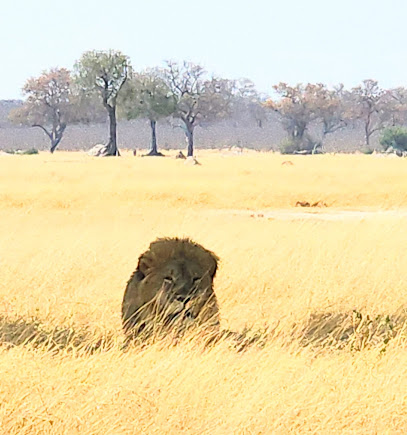
tshakabika Self Catering Lodge
57.7 km
Discover the beauty of Hwange National Park at Tshakabika Self Catering Lodge, your ideal retreat for wildlife adventures and serene getaways.

Camp Chitubu, Hwange National Park
62.8 km
Experience the wild heart of Zimbabwe at Camp Chitubu in Hwange National Park, where unforgettable wildlife encounters await.
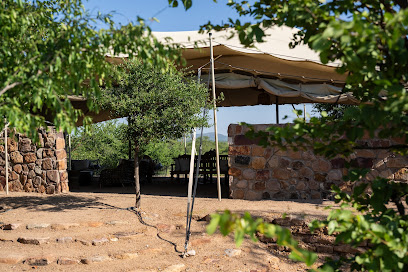
Waterhole, Hwange National Park
72.0 km
Experience the vibrant wildlife at Waterhole in Hwange National Park, a premier destination for nature lovers and safari enthusiasts in Zimbabwe.
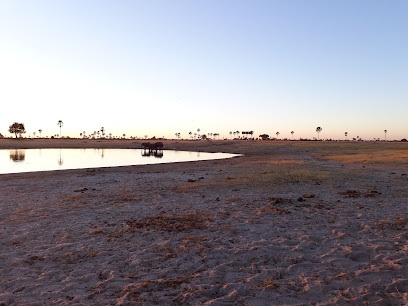
Davison's Camp
76.4 km
Discover the beauty and adventure of wildlife at Davison's Camp, a premier safari destination in Zimbabwe's majestic landscapes.
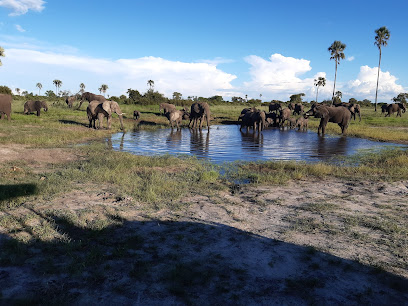
Gamba Pool
79.3 km
Discover the tranquil beauty of Gamba Pool in Hwange, Zimbabwe, a wildlife haven and a serene escape into nature's embrace.

Memorial Plaque
80.4 km
Explore the Memorial Plaque, a serene tribute that invites reflection on history and honors the sacrifices of those who shaped the past.

Mpongola River Mini Falls
82.8 km
Experience the serene beauty of Mpongola River Mini Falls, a hidden gem in Hwange, perfect for relaxation and nature photography.

Big Baobab Tree
82.9 km
Explore the magnificent Big Baobab Tree in Hwange, a natural wonder and symbol of Zimbabwe's rich heritage and biodiversity.

Mopani tree
83.4 km
Explore the enchanting Mopani Tree in Hwange, a symbol of resilience and beauty in Zimbabwe's stunning landscapes, perfect for nature lovers and adventurers.

Essential places to dine
Hwange Main Camp Restaurant
57.8 km
Experience authentic Zimbabwean cuisine amidst stunning natural beauty at Hwange Main Camp Restaurant in Hwange National Park.

Eating House
82.3 km
Discover authentic Zimbabwean cuisine at the Eating House in Hwange - where every meal is a celebration of local flavors.

Sports Cafe
84.8 km
Discover Hwange's vibrant sports scene at Sports Cafe - where delicious food meets thrilling live sports action.
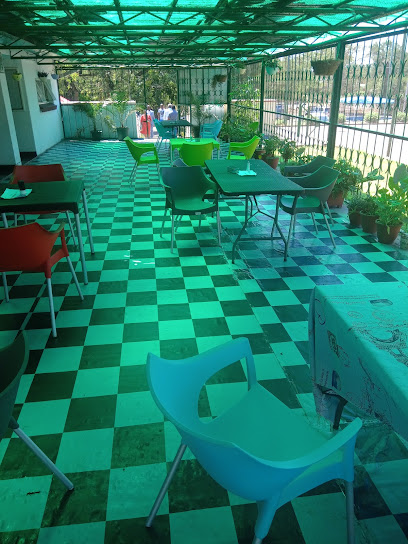
Upshot Mabhiza
84.8 km
Discover delicious grilled dishes at Upshot Mabhiza in Hwange - where local flavors meet warm hospitality.

Afro Inn Takeaways
84.9 km
Experience authentic Zimbabwean cuisine at Afro Inn Takeaways in Hwange – where every meal tells a story.
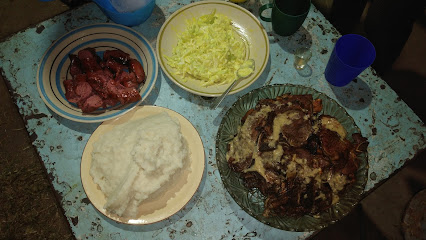
Shadows Grill House
85.0 km
Discover delightful family-friendly dining at Shadows Grill House in Hwange, where delicious meals meet warm hospitality amidst stunning surroundings.
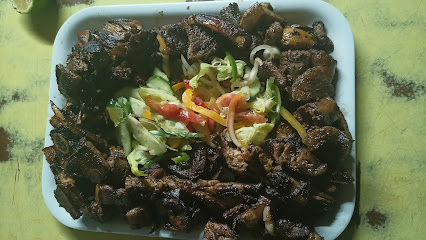
Grill it Leisure Corner Restuarant
85.1 km
Experience authentic Zimbabwean cuisine at Grill It Leisure Corner Restaurant in Hwange - where flavor meets hospitality.

Rail View Restuarant
85.3 km
Experience authentic Zimbabwean cuisine with stunning views at Rail View Restaurant in Hwange.

Chicken Inn
86.9 km
Discover delicious fast food delights at Chicken Inn in Hwange—where every meal is a tasty adventure.

Pizza Inn
86.9 km
Discover delicious pizzas made with fresh ingredients at Pizza Inn in Hwange – the perfect stop for travelers craving Italian flavors.

Chye's Chicken Hut & Spice World
88.7 km
Discover the vibrant flavors of Zimbabwe at Chye's Chicken Hut & Spice World in Hwange – where every dish tells a story.

Café Hwange
88.9 km
Discover delightful flavors at Café Hwange, where local cuisine meets warm hospitality amidst the beauty of Zimbabwe.

The Spot Restaurant
89.2 km
Experience the authentic taste of Zimbabwe at The Spot Restaurant in Hwange – where flavor meets culture.

Gajitunda Beer Hall
89.6 km
Discover the vibrant atmosphere of Gajitunda Beer Hall in Hwange, where local brews meet warm hospitality in an unforgettable experience.

Markets, malls and hidden boutiques
Mazulu General Dealer
82.2 km
Explore local culture and essential supplies at Mazulu General Dealer in Hwange, a vibrant hub for tourists and locals alike.

Lukosi Business Center
82.3 km
Experience the essence of local shopping and culture at Lukosi Business Center in Hwange, Zimbabwe's vibrant retail destination.
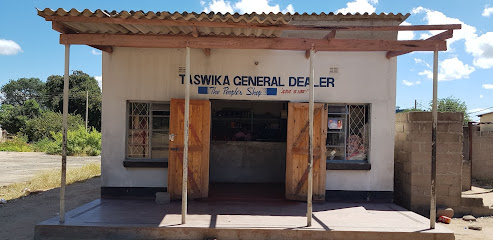
Taswika General Dealer
82.3 km
Experience the vibrant local culture and flavors at Taswika General Dealer, your go-to grocery store in Hwange, Zimbabwe.

1000 miles shop
82.8 km
Explore the 1000 Miles Shop in Hwange for unique local crafts and souvenirs that celebrate Zimbabwe's vibrant culture and artistry.
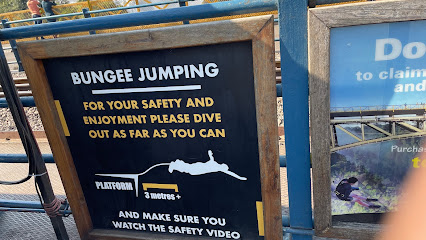
Mpongola Store
83.6 km
Explore the essentials of Hwange at Mpongola Store, your go-to convenience shop for snacks, supplies, and local goods.

St. Mary's Shopping Mall
84.5 km
Discover the convenience of St. Mary's Shopping Mall in Hwange, the perfect stop for supplies and unique local finds during your Zimbabwe adventure.

Bata Hwange
85.2 km
Discover stylish clothing and accessories at Bata Hwange, where fashion meets the beauty of Zimbabwe's landscapes.
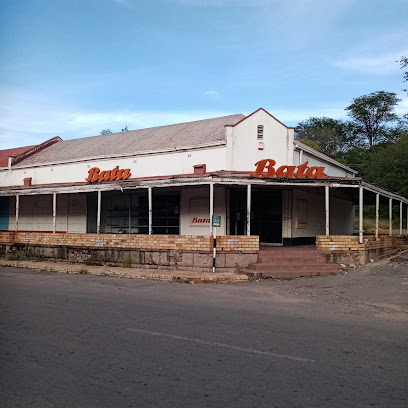
La Foodie Xpresso
85.3 km
Explore local flavors at La Foodie Xpresso, a charming grocery store in Hwange offering a diverse selection of culinary delights for every palate.
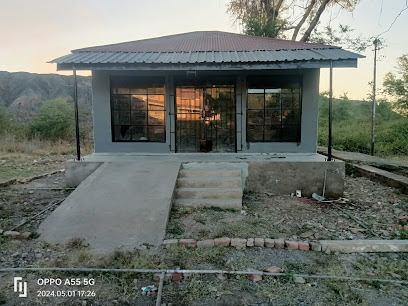
TV Sales and Home
85.8 km
Explore a wide variety of stylish furniture and home decor at TV Sales and Home, Hwange's premier furniture store, reflecting Zimbabwean culture and craftsmanship.
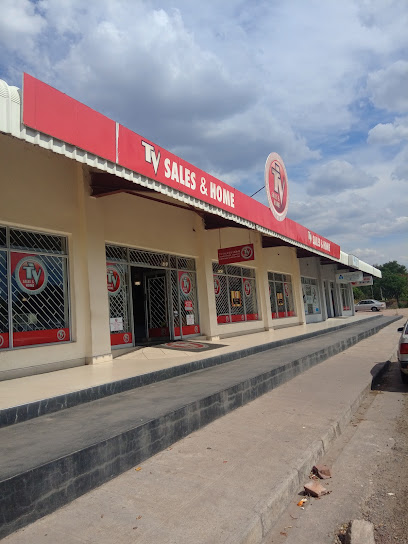
Jet Store
85.9 km
Discover unique fashion and local craftsmanship at Jet Store, Hwange's premier clothing destination for tourists seeking style.

TM Supermarket
85.9 km
Discover the ultimate shopping convenience at TM Supermarket in Hwange, offering a variety of local and international products under one roof.

Pick n'Pay Liquor store
85.9 km
Explore the diverse selection of beverages at Pick n' Pay Liquor Store in Hwange - the perfect stop for locals and tourists alike.

Hwange Flea Market
85.9 km
Discover the vibrant culture and unique offerings at Hwange Flea Market, where local artisans display their creativity through clothing and handmade crafts.

Justrite Hardware Supplies
85.9 km
Justrite Hardware Supplies in Hwange offers a wide range of quality tools and materials for all your DIY and home improvement needs.
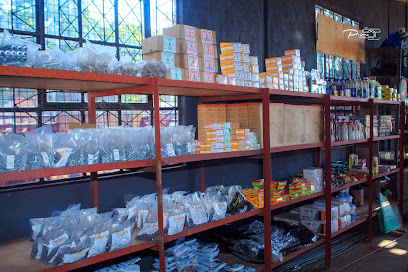
BATA
85.9 km
Discover stylish and comfortable footwear at Bata Shoe Store in Hwange, where quality meets fashion for every occasion.

Essential bars & hidden hideouts
The elephant sounds lodge
0.0 km
Experience the essence of wildlife and luxury at The Elephant Sounds Lodge in Hwange National Park, a serene escape for nature lovers.

Tshanini Bar
62.6 km
Experience the lively atmosphere of Tshanini Bar in Dete, where local brews and friendly faces await in a welcoming beer hall.
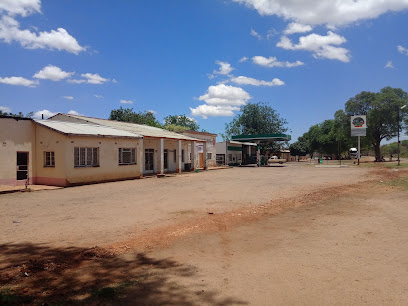
Lions Den Bar
62.6 km
Discover the lively atmosphere of Lions Den Bar in Dete, where great beers meet a welcoming community in the heart of Zimbabwe.
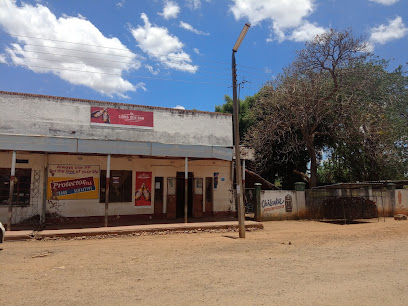
Dete Cocktail bar
63.7 km
Discover the vibrant atmosphere of Dete Cocktail Bar, a must-visit beer hall offering local drinks and a lively ambiance.

Elephant and Dassie Restaurant
66.4 km
Experience the rich flavors of Zimbabwean cuisine at Elephant and Dassie Restaurant, nestled in the picturesque Sinamatella Camp.

Picnic Spot
69.0 km
Discover tranquility at Picnic Spot, a perfect blend of nature, relaxation, and culinary delights in Zimbabwe.

Madidilika Bottle Store
82.3 km
Experience the vibrant culture of Hwange at Madidilika Bottle Store, where local brews and friendly company await in a cozy setting.

Tennis Club
84.8 km
Experience the vibrant atmosphere of the Tennis Club in Hwange, where sports and community spirit come together in a beautiful setting.
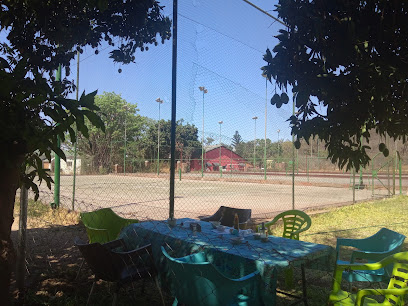
Colliery Club
84.9 km
Discover the Colliery Club in Hwange - A vibrant sports hub where locals and visitors mingle in a lively atmosphere filled with camaraderie and community spirit.

Hwange Cricket Club
85.0 km
Discover the lively atmosphere and delightful cocktails at Hwange Cricket Club, the perfect spot to unwind in Hwange, Zimbabwe.
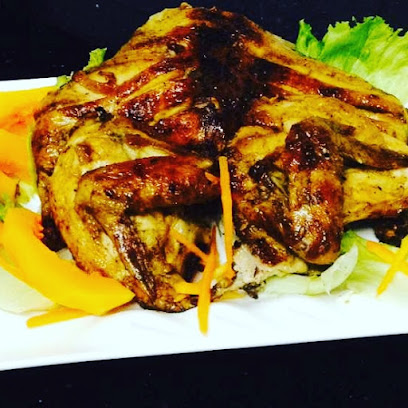
NRZ BEERHALL
85.9 km
Experience the vibrant local culture at NRZ Beerhall, Hwange's lively bar offering a great selection of drinks and authentic Zimbabwean hospitality.

Baobab Hotel
87.2 km
Discover the charm of Hwange at Baobab Hotel, your gateway to Zimbabwe's breathtaking wildlife and natural beauty.
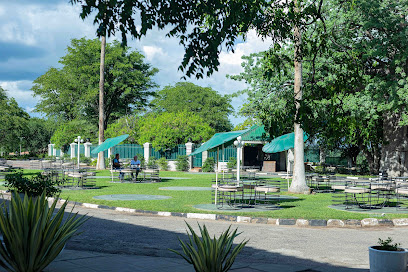
El Dorado Rock Park
87.4 km
Experience the laid-back charm of El Dorado Rock Park in Hwange, where local culture and stunning views create an unforgettable escape.
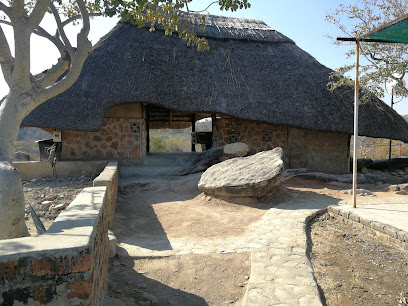
ZPC Social Club
88.2 km
Experience the charm of Hwange at ZPC Social Club, a cozy guest house with a local vibe and affordable amenities.




